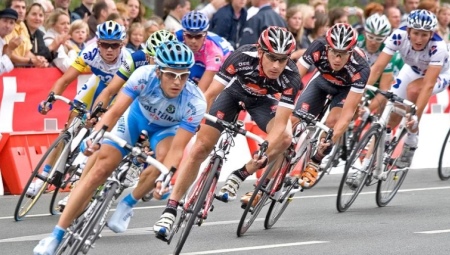Watching athletes famously pedaling is very exciting. But a real fan is someone who knows not only what is shown by television cameras or visible from the stands of the stadium. Be sure to understand the "origins" of cycling, and what it is.

History of occurrence
In the world
Cycling is incredibly young when compared to athletics, running, swimming and competitive shooting. In fact, its history is also the history of the “sports equipment” itself. The intention to move on wheels, using only their own physical strength of riders, visited people already in antiquity. But only in the 19th century did the success of mechanics and industry create the necessary material base. In the first half of the century before last, however, there were either incomparably heavy (over 40 kg) bicycles, or slightly lighter "bone-walkers".
Those and others were equally unsuitable for competitive races. The first reliably known bicycle competition took place on the last spring day of 1868 in the park of the Paris Saint-Cloud district. For racing, they were forced to use the "bone-walkers" and drove them tens of kilometers. This was a real torment for the riders.
So, the winner of the first Paris-Rouen road racing covered the distance of 120 km in 10 hours and 45 minutes.
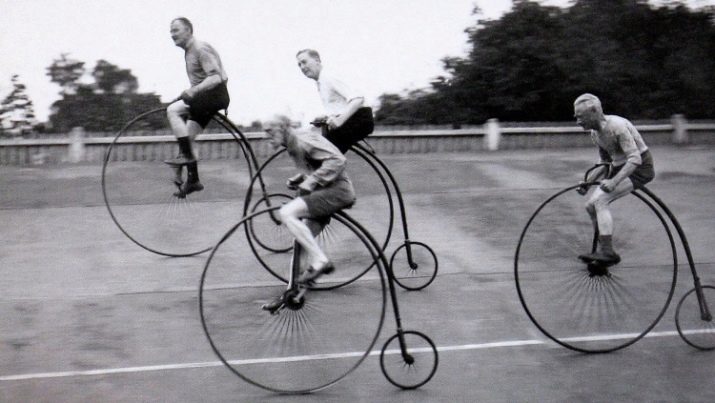
By modern standards, this speed is not particularly impressive and sports walkers. Soon, lighter and faster spider cars appeared. It was on such a bicycle that the first round-the-world trip was made at an average speed of 60 km per day.But the "spiders" were only a compromise solution - they were overturned by a negligible push. Athletes very soon abandoned them, which contributed creation in 1885 of a hollow pneumatic tire.
Actually, only from this moment can the history of cycling be counted in the modern sense. Within a few years, there is a division into categories of riders, and in the 1890s even world championships are held. At the first Olympic Games of our time, cycling was immediately among the disciplines. And already then they competed in 5 types of races on the track and in road races. But there was no established Olympic bicycle program for a very long time.
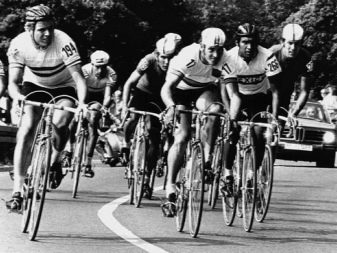
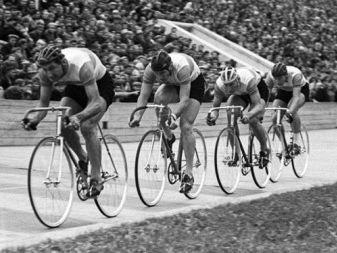
In Russia
Passion for two-wheeled transport affected our country almost immediately. It is authentically known that for the first time cyclists officially competed in Moscow on July 24, 1883. Foreseen two distances - 1.605 m and 8.025 km. Among the riders were 3 foreign athletes. And a year later with a little, in September 1884, a race took place on the Field of Mars.
The cycling societies in the 1890s organized the construction of the first paved tracks. The number of participants in races is gradually growing. Over the next two decades, several big names appeared that were known even abroad. A serious problem, however, was the commercialization of cycling. Leading companies "bought up" the best athletes, took control of the competition itself.
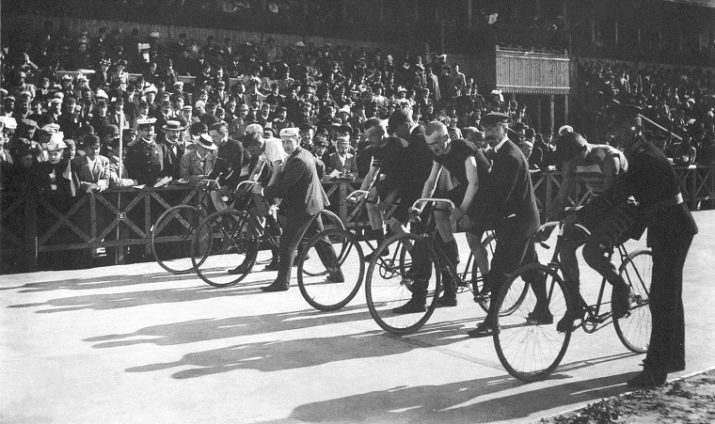
The cycle track, it seemed, from a venue in skill to competition turned into a field of competition between different bike suppliers. This is the opinion that has developed even among prominent cyclists. And by the beginning of the 1910s, the impression might have been that cycling was losing the character of sports in general. Everything changed dramatically in the 1920s, when large-scale competitions began again. They took place in the same two capitals as before, but new regions were added: Siberia, Ukraine.
Already in 1923 the first national championship takes place. But genuine prosperity begins after the 1928 Olympics. And on August 12, 1937, the first multi-day race in Russian history starts. It should be mentioned, however, that success in Olympic competitions did not come immediately. The first attempt in 1952 was unsuccessful.
In the Olympics of 1976 and 1980, domestic athletes performed more worthily.
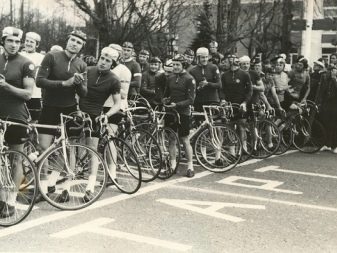
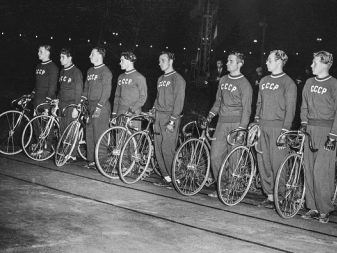
In 1988, 4 gold medals were won. The next time gold was received in 1996. However, today its former glory is largely lost. Domestic athletes rarely go to foreign and international races. And there is practically no state funding for cycling; one can only hope that the current difficulties are only an intermediate moment before a new take-off.
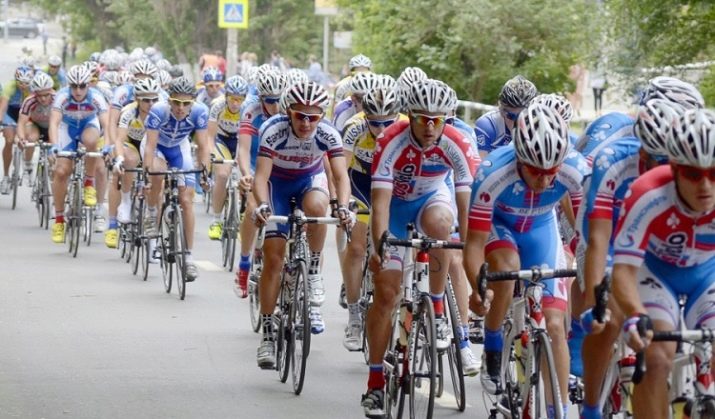
Discipline Classification
The long history of cycling and a wide variety of types of bicycles, tracks could not but lead to the emergence of a wide variety of categories of competitive disciplines. And this process is not over. It is likely that in the next few months or years the list of competitive programs will replenish with new positions. because enthusiasts and professionals can choose the direction that they like most.
The most important point to consider: all or almost all types of cycling are further divided into men's and women's competitions. Start a general debriefing from racing on the highway. The bottom line is very simple: cyclists try to ride on a regular paved road in the shortest possible time. It is this discipline that attracts the attention of the public most of all, and it is it that sponsors willingly finance.
At the Olympic Games, individual and mass road racing are held.
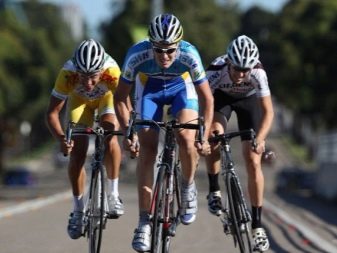

But on ordinary highways, they also organize races that are not included in the official program of the Olympic Games. These include, but are not limited to:
- multi-day races:
- criteria;
- team races;
- uphill speed competition.
Of course such classes are not purely amateurish - professionals also participate in them, but the status of competitions is much lower. Individual race implies a separate start. This means that athletes begin to move alternately, at pre-approved time intervals. In a group (collective) race, the start takes place simultaneously. Teams have some elements of distance tactics, designed to help stay ahead of rivals.
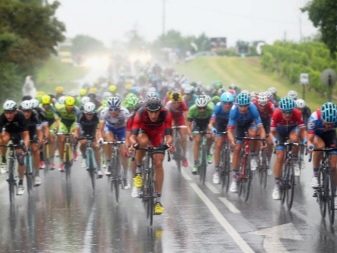

The criterion is called circular cycling along city streets. After passing a certain number of laps, intermediate finishes with scoring are completed. Jumping is not practiced. Spectators are as close to athletes as possible. Multi-day races are held in several stages, each of which includes a group competition and travel on time.
Racing on the oval track with a slope is also quite popular. The length and width of the tracks varies according to the chosen discipline. They cover the tracks with wood or concrete. In the sprint, you need to drive 2 or 3 circles, and a sharp struggle flares up on the last 200-300 m.
In team sprints, groups of 3 riders already overcome short distances. Each of them rides in one circle, developing maximum speed, and then drops out. On the tracks they arrange both time races and points races. The second version of the competition is enrolled in the OI program.

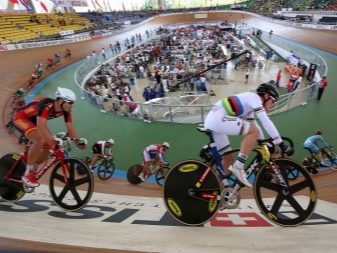
Scratch - a group race with a simultaneous start: a maximum of 24 participants, an advance of more than a circle is equivalent to an automatic victory. Individual and group persecution are also distinguished. The group pursuit race is deservedly recognized as the most difficult variety of track competitions.
A discipline like keirin was invented in Japan. Participants start at the same time, and a motorcycle rides in front of them, which cannot be overtaken. He leaves the track when 2.5 laps are left to the finish line. Then comes the classic race for speed.
Mountain bike - a sport involving the use of mountain bikes of the same name. This is a very extreme discipline, taking place strictly where there is no hint of pavement.
It’s easy to see a mountain bike - it is very often used by ordinary city riders.


As for cross-country motocross, this type of cycling is abbreviated as BMX. Tires on bicycles are wide, like mountain bikes, but the diameter of the wheels is smaller, and riders sit very low.
Cross-country has the abbreviation XC. This discipline is considered one of the perfect cycling competitions. It implies a number of routes on which there are descents from a hill. Natural barriers are actively used, and artificial barriers are added to them as necessary. At the Olympics, cyclists also compete in cross-country.
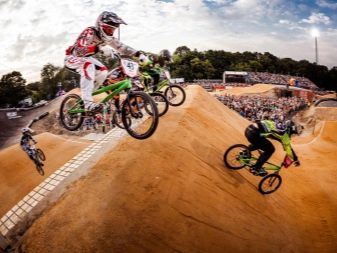

Some riders prefer dert. This name was given to one of the extreme skiing styles. The track of a special sample is complemented by earthen jumps. You have to jump through these jumps. Performing tricks while in the air adds extra entertainment. However, this element is not necessary for riders.
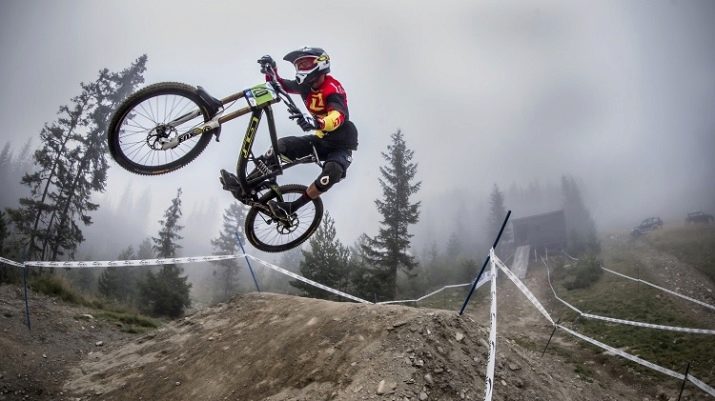
Downhill, aka Downhill, is an extreme branch of a mountain bike. Athletes ride down the mountain slope and try to develop maximum speed. Downhill is necessarily an obstacle race that is both natural and artificial. Only the best riders with excellent equipment can participate in such races.
No less high requirements for athletes, however, and freeride. The name itself hints at the free combination of a wide variety of elements borrowed from other styles. But it is precisely the ambiguity and complex composition of the discipline that greatly impedes the passage of the track. The probability of injury in freeride is very high.
Bicycles with strong frames and especially reliable disc-type brakes are always used.


Sometimes you can meet the “parallel slalom”, the creators of which were clearly inspired by cross-country skiing. Two participants of the race simultaneously begin to move down parallel paths. They have to:
- jump from ski jumps;
- pass through steep sections;
- make sharp turns.
Biker cross requires a wide track. Its length is about 250 m. Despite such a small length, the athletes' route is full of various obstacles.
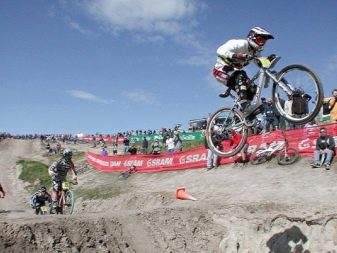

Racing is a type of BMX. Racers ride along the track with many turns and jumps. From 2 to 8 athletes can participate in the race. The winner is the first to finish. Tricks do not need to be performed, and they are not even welcomed, since they interfere with the passage of speed.
Another BMX discipline - flatland - is, on the contrary, aimed at performing a lot of tricks when traveling on a flat surface. Spectators and experts often compare this format of cycling with dancing.
Recently, a great deal of interest has been brewing. Here it is already required not so much speed as general physical fitness and endurance. After all, this type of competition is also called a cycling marathon. There are competitions when athletes ride for several days, covering a total of thousands of kilometers. Brevet can only be practiced on the highway, and participants are assigned an official classification.
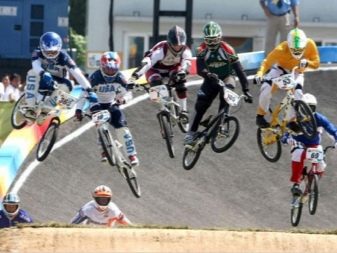
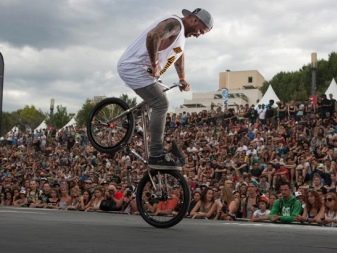
Large-scale competition
The main part of road cycling competitions is held in European countries in the spring, summer or autumn (when the weather allows). Almost always they try to lay a route so that it fits into the territory of one country. It is known:
- 14 major races in Belgium;
- 10 in France;
- 8 in Italy;
- 5 in Spain.
From 1 to 3 highway competitions during the season are organized in England, Switzerland, Holland and Germany. But it is worth noting the races taking place in countries that are not at all associated with cycling. Thus, in May, Norwegian cyclists participate in the “Fjord Tour”, and in August - in the “Arctic Race”. August is also accompanied by the “Tour of Denmark” and the “Tour of Poland”. One of the weeks in April is the Turkey Tour.

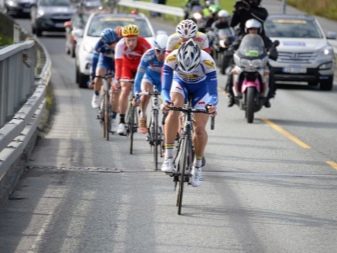
Weekly competitions are organized in May in California and in August in Colorado. The one-day Grand Prix takes place in September in Quebec and in Montreal. When winter comes in temperate regions, cyclists set off to compete in Australia, Emirates, Malaysia or Oman. The main race of the planet, not counting the Olympic, recognized World Tour, uniting 28 more private races. They do not pass only in Africa, South America and Antarctica.
The 52-week World Tour should include teams that agree to compete in all the races of the season. Traditionally, the Australian “Tour Down Ander” is considered the starting point. And it ends with the World Cup. In total, no more than 18 teams are selected for participation. In each of them there can be no more than 30 participants, whose roles during the race are strictly distributed in advance.
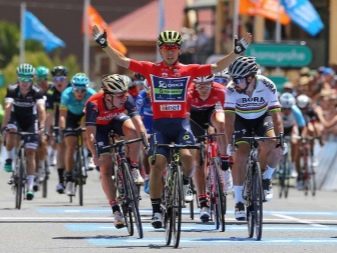
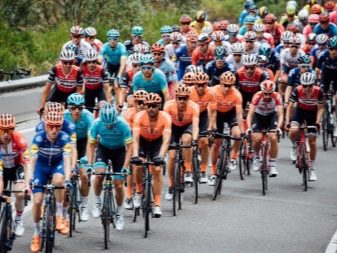
The world tour is a continuation of the cycling that fell into decay at the beginning of the last century. In fact, not only riders but also sponsors (bicycle manufacturers) compete in it. All teams use Shimano, SRAM, Campagnolo equipment. Using bikes of other brands is strictly prohibited by the rules. At the same time, bicycles are also classified by race type.
Inside the World Tour, it is customary to distinguish three of the most prestigious stages (Grand Tours):
- Tour de France;
- Giro Italy;
- Vuelta Spain.
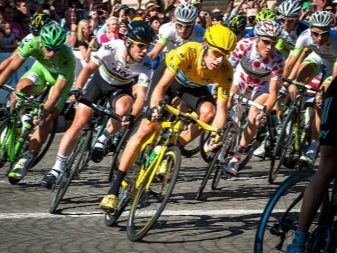
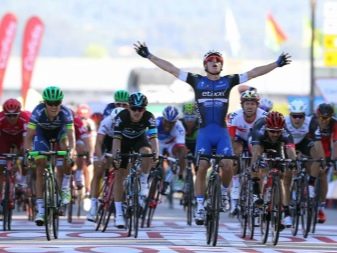
Races such as:
- Milan San Remo;
- Tour of Flanders;
- Paris-Roubaix;
- Liege-Bastogne-Liege;
- Lombardy.
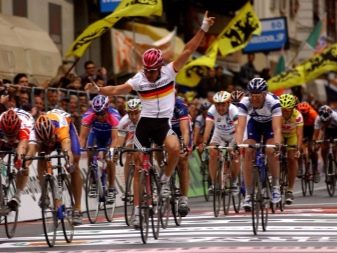
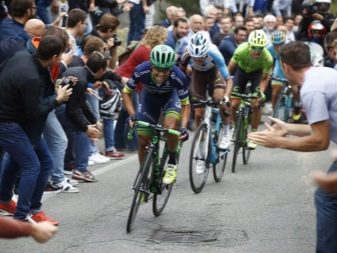
Lower level athletes usually compete in:
- Eurotour;
- Pan American Highway Championship;
- Asian Championship;
- local races on a smaller scale.
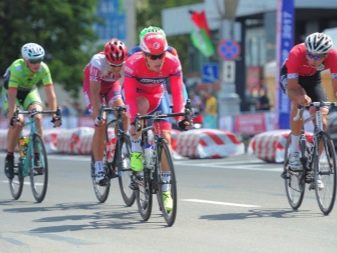
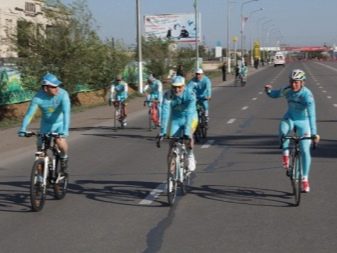
Famous cyclists
Attention and respect deserved Alberto Velasco. He was originally a professional athlete. In 2004, 22-year-old Velasco was announced that his brain was affected by an aneurysm. But the next few years, the cyclist won brilliant victories. Even the doping scandal did not break Velasco; Returning to the big sport after disqualification, he stopped his career only in 2017.
Another famous Spaniard cyclist - Joaquim Rodriguez - Noted not only for many years of participation in the Russian team. He stably wins all mountain races. And in one-day competitions it’s hard to find equal to the Belgian Philippe Gilbert.
He repeatedly participated in the most prestigious tours and almost always prevailed.



From our compatriots it is worth paying attention to Denis Menshov, which, however, stands for the Italian team. Menshov once managed to get ahead of all the favorites in the Tour de France.
But even more admiring Olga Slyusarevawho won 6 times in a row at the World Cup and 5 times became the strongest cyclist in Europe. It’s awkward to even mention the victory in the World Cup and the title of master of sports against this background. But the legendary once reputation Lance Armstrong was irrevocably collapsed in 2012, when the athlete confirmed the use of stimulants.



In order not to end on a sad note, it is worth mentioning a few more outstanding cyclists:
- Fabian Cancellara
- Victor Kapitonov;
- Evans Cadel;
- Miguel Indurein;
- Jacques Anketil;
- Eddie Merckx.

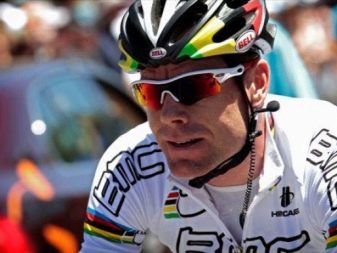
Cycling today
These days, professional-class bicycles, like many other industrial products, are mainly made in China. Most amateur cyclists in relation to the entire population are in Holland. There, the bike has over 99% of adult residents. If you start from the popularity of cycling, the rating will be as follows:
- Liege-Bastogne-Liege - 247 cyclists;
- Tour de France - 218 participants;
- Vuelta Spain - also 218 participants;
- Milan San Remo - 200 riders;
- Flanders tour - 199 athletes;
- Paris-Roubaix - 198 riders;
- Lombardy - 168 riders;
- Giro Italy - 127 athletes.
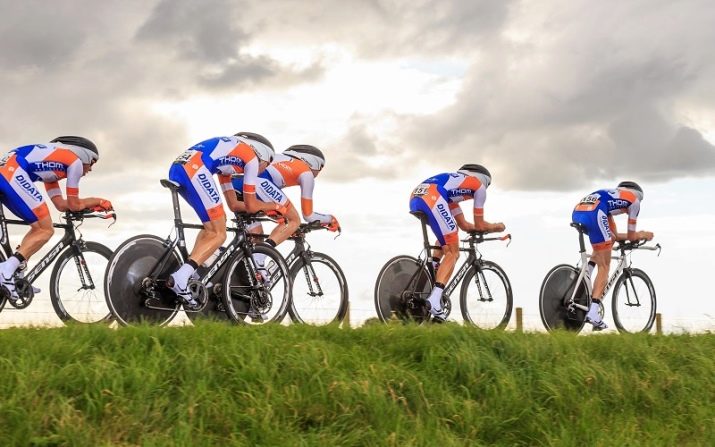
Interesting Facts
The largest and most significant competitions do not always cause eminent participants the greatest tension. Many of them cannot abandon emotions in principle, while others worry when they compete in “their” cities. And there is one good reason - Despite the apparent grace, cycling is one of the most traumatic areas.
In many lists of dangerous sports, he appears almost on a par with diving, rafting, mountain climbing and hockey. Among the Olympic disciplines, cycling is among the ten most dangerous, ahead of tennis and triathlon, but inferior to weightlifting, football and gymnastics.
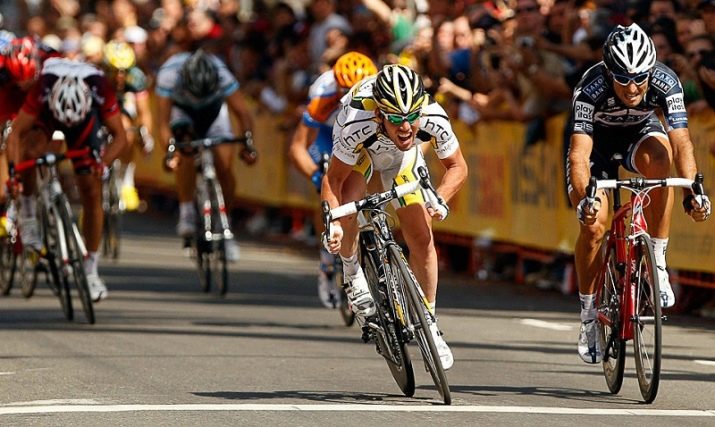
It is no less curious that most winners of prestigious tours are unlikely to be able to fix their vehicles. Athletes concentrate entirely on managing the bike, and the technical work, in addition to the work required during the training, is trusted by mechanics. And the fasting days of professional cyclists are much easier than for lovers. In the conditions of a busy competition schedule, excessive dietary rigidity would only create an additional problem.
Of all non-alcoholic drinks, the vast majority of cyclists prefer coffee.

Almost all athletes, except those participating in the World Tour, rarely boast of financial well-being. Many races end with either symbolic bonuses or no incentive funds at all. But at the same time, athletes eat a lot, because energy consumption is extremely high. Almost all competitions, except for one-day trips, stages of the Grand Tour and other single exceptions, last a maximum of 5 or 6 hours.
because cycling workouts last about the same throughout the day.
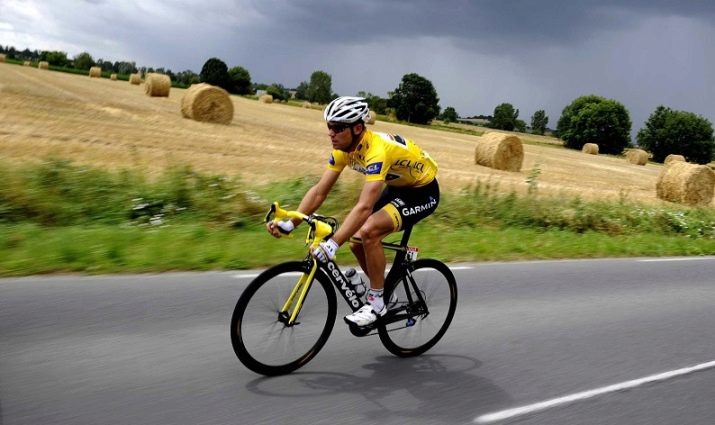
You can learn the secrets of cycling by watching the video below.
